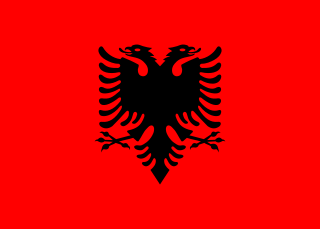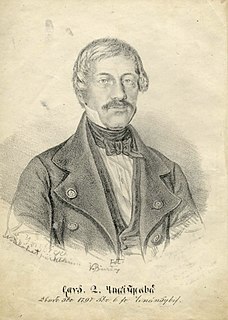Related Research Articles

Albania, officially the Republic of Albania, is a country in Southeastern Europe. It is located on the Adriatic and Ionian Sea within the Mediterranean Sea, and shares land borders with Montenegro to the northwest, Kosovo to the northeast, North Macedonia to the east, Greece to the south; and maritime borders with Greece, Montenegro and Italy to the west. Tirana is its capital and largest city, followed by Durrës, Vlorë and Shkodër.
The counties of Albania are the largest administrative subdivisions of Albania. The 12 counties are composed of 61 municipalities, which are the basic territorial entities for local administration, consisting of 373 administrative units.

Durrës County, officially the County of Durrës, is a county in the Northern Region of the Republic of Albania. It is the smallest by area and the second most populous of the twelve counties, with more than 289,000 people within an area of 766 km2 (296 sq mi). The county borders on the Adriatic Sea to the west, the counties of Lezhë to the north, Dibër to the east and Tirana to the south. It is divided into three municipalities, Durrës, Krujë and Shijak, with all of whom incorporate sixteen administrative units.

Shkodër County is a county in northwestern Albania, with the capital in Shkodër. The county spans 3,562 square kilometres (1,375 sq mi) and had a total population of 200,007 people as of 2020. The county borders on the counties of Lezhë, Kukës and the country of Montenegro. The county consists of five municipalities, including Fushë-Arrëz, Malësi e Madhe, Pukë, Shkodër and Vau i Dejës.

Tirana County, officially the County of Tirana, is a county in the Central Region of the Republic of Albania. It is the tenth largest by area and the most populous of the twelve counties, with more than 895,000 people within an area of 1,652 km2 (638 sq mi). The county borders on the Adriatic Sea to the west, the counties of Durrës to the northwest, Dibër to the northeast, Elbasan to the east and Fier to the southwest. It is divided into five municipalities, Tirana, Kamëz, Kavajë, Rrogozhinë and Vorë, with all of whom incorporate twenty-nine administrative units.
The Ashkali and Balkan Egyptians, are Albanian-speaking ethnic cultural minorities which mainly inhabit Kosovo. They are sometimes considered to be Albanized Romani, but they do not self-identify as such. Prior to the Kosovo War of 1999, Ashkali registered themselves as Albanians.

Fadil Avdullah Vokrri was a Yugoslav and Kosovan football administrator and player.

Since the Declaration of Independence in 1912, Albania has undergone administrative territorial reforms a total of 21 times. Its administrative boundaries have been divided and/or merged into regions (krahina), prefectures, sub-prefectures, counties (qarqe), districts (rrethe), municipalities (bashki), cities, communes (komuna), neighborhoods (lagje), villages and localities. The country is presently divided into 61 municipalities and 373 units of local governance.

Skadarska Krajina, known simply as Krajina is a geographical region in southeastern Montenegro stretching from the southern coast of Lake Skadar to the mountain of Rumija, comprising several villages. It is inhabited mainly by Albanians and Montenegrins. The area is divided between the municipalities of Bar and Ulcinj.

Leon Qafzezi is an Albanian writer and cineaste.

Naum Veqilharxhi, born Naum Panajot Bredhi (1797–1846), was an Albanian lawyer and scholar. In 1844, he created a unique alphabet for the Albanian language using characters he had created himself, the Vithkuqi script. Veqilharxhi is one of the most prominent figures of the early Albanian National Awakening, and is considered by Albanians as its first ideologue.
Robert Ndrenika is an Albanian actor and former politician. He was honored with the People's Artist of Albania in 1988.

Andrea Shundi is an Albanian-American agronomist of the 20th and 21st century. His academic research and publications focus mainly on the forage systems as a source feeding of the livestock, on viticulture and viniculture, and also on the history of the Albanian agriculture.
The Begolli are an Albanian fis which rose to prominence in present-day Kosovo in the Ottoman era and were an influential feudal family in the region.
Riza Dani (1884–1949) was an Albanian politician and activist of the 20th century.

The Mataruge were a medieval Albanian tribe which originally lived in Old Herzegovina and southern Dalmatia. Their name is attested in historical record for the first time in 1222 in the Pelješac peninsula of Dalmatia. Throughout the 20th century, they were considered to have stopped existing as a separate community during the Ottoman conquest of the Balkans in the 15th century. Modern research in the Ottoman archives showed that they had dispersed throughout the western Balkans following Ottoman conquest and formed settlements in other areas. By 1477, a part of them lived in the kaza of Prijepolje, where they formed their own distinct community (nahiye) with 10 villages (katund). One of their leaders appears in the defter to have been a Vojko Arbanash. Other Mataruga communities had moved in central Croatia and Bosnia. Over time they became culturally integrated in the surrounding communities of their new homelands. Families who trace their origin to the tribe are found today in all countries of the western Balkans.

Patiška Reka is a village in the municipality of Sopište, North Macedonia.

The Canyon of Gjipe is a bay and calcareous canyon located between Dhërmi and Vuno carved by the Ionian Sea in Vlorë County, Albania. The canyon occupies a length of 800 metres (2,600 ft) and a width that can varies between 10 metres (33 ft) and 20 metres (66 ft). It represents a narrow strait, created by the activity of the brook flowing through its narrow pass. There are numerous rock formations along the canyon, including a number of caves.

The SH4 highway is a national highway in Albania spanning 223.29 kilometres across the counties of Durrës, Fier, Gjirokastër and Tirana. As it connects the country's second largest city Durrës to Greece, the highway represents a significant north–south transportation corridor in Albania and an essential part of the Adriatic–Ionian motorway and Pan-European Corridor VIII.
References
- ↑ "Produkti Brendshem Bruto për fryme sipas Rajoneve Statistikore sipas Rajonet, Variabla dhe Viti/ Produkti i Brëndshëm Bruto për frymë, Euro sipas Rajonet, Variabla dhe Viti" (in Albanian). Instituti i Statistikës (INSTAT). Retrieved 22 July 2020.